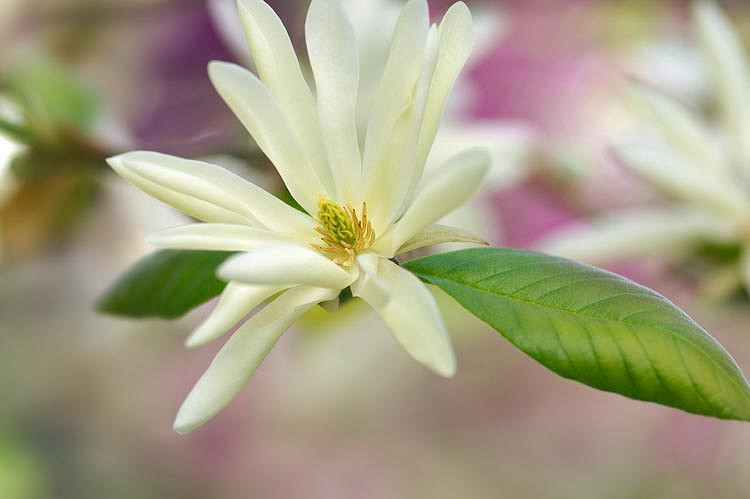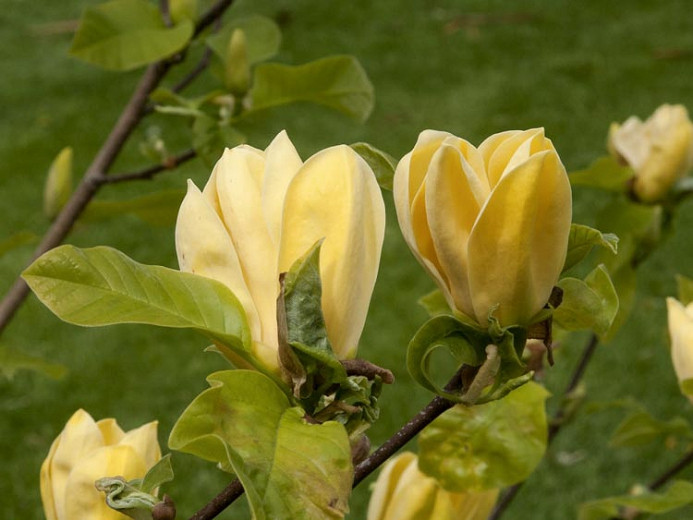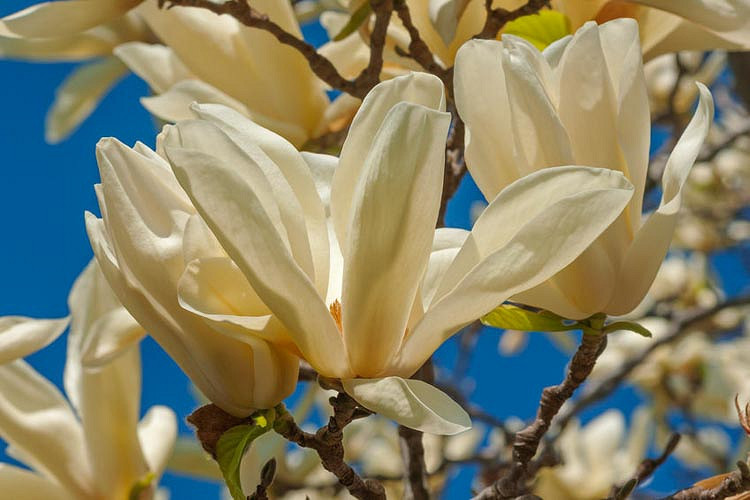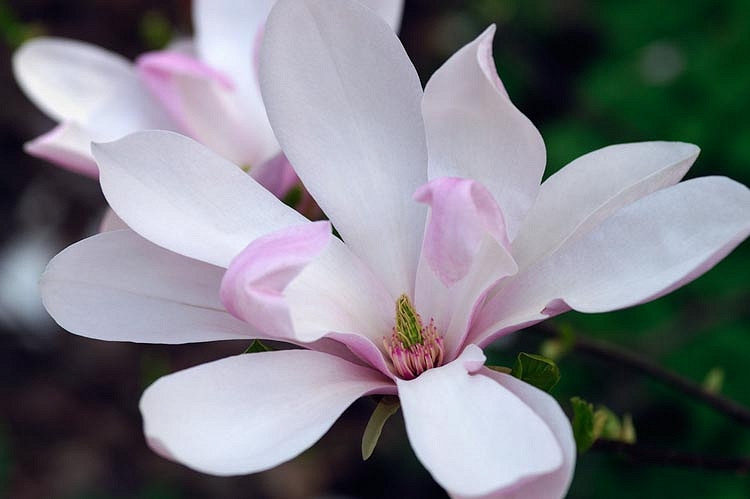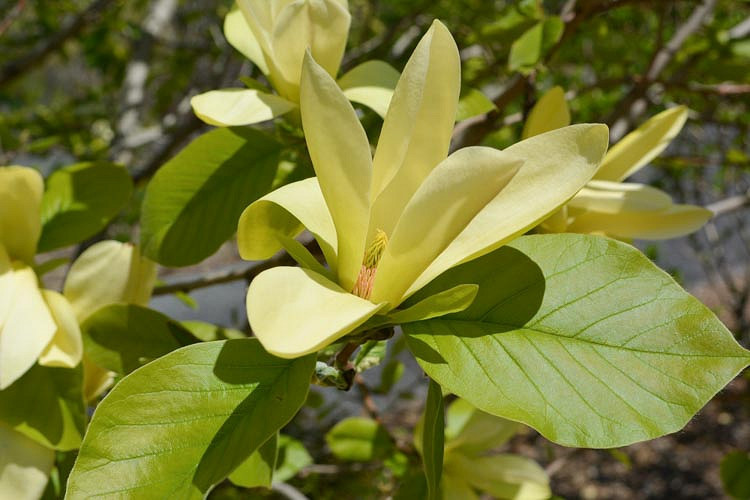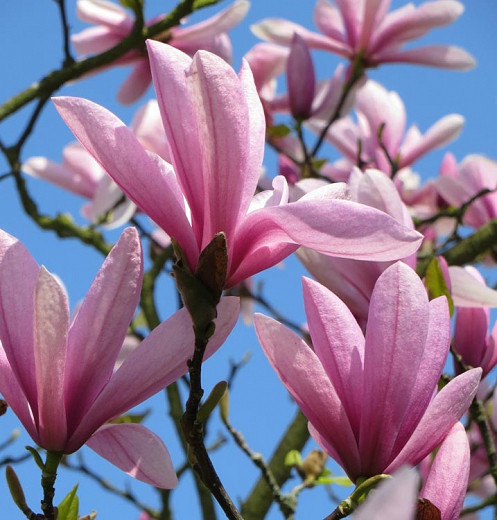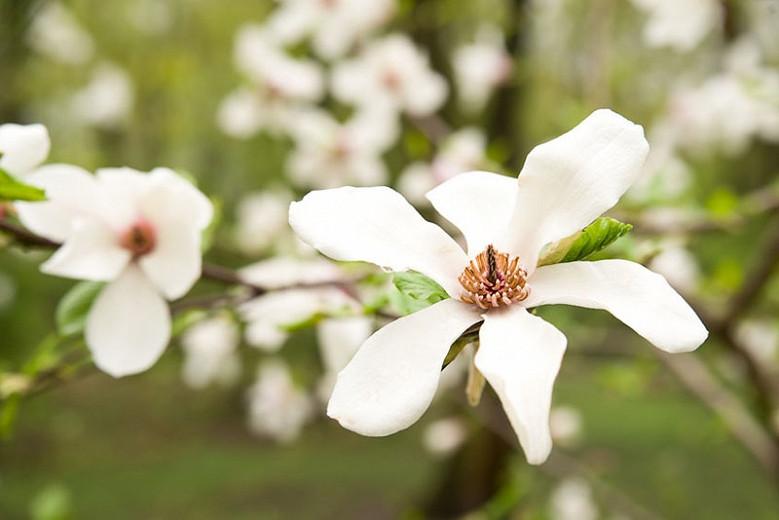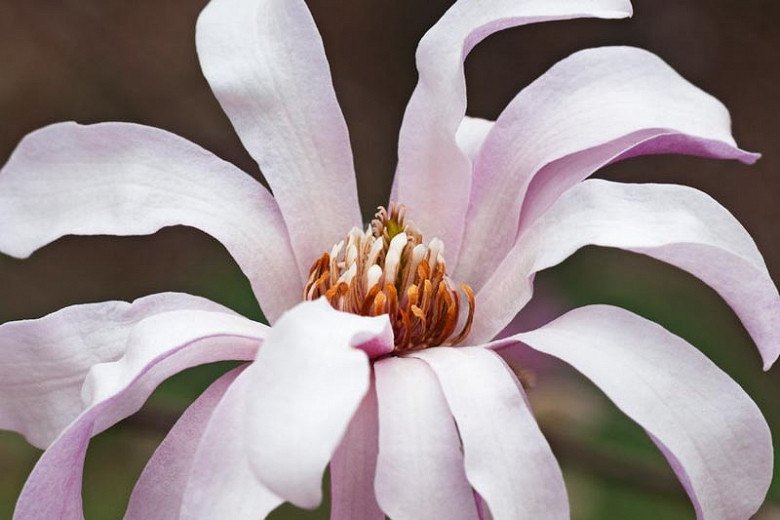Magnolia Gold Star
Hardy, award-winning Magnolia ‘Gold Star’ is a small to medium, upright, deciduous tree with star-shaped, scented, creamy-yellow flowers in early to mid-spring. Each luminous flower, 4 in. across (10 cm), counts up to 14 long and narrow tepals. The overall effect of these many tepals is that of a starburst.
Hardy, award-winning Magnolia 'Gold Star' is a small to medium, upright, deciduous tree with star-shaped, scented, creamy-yellow flowers in early to mid-spring. Each luminous flower, 4 in. across (10 cm), counts up to 14 long and narrow tepals. The overall effect of these many tepals is that of a starburst. The blooms are borne on leafless branches since they emerge before the new leaves begin to unfurl. The foliage of elliptic, ovate leaves emerges with attractive bronze-reddish tones in spring before maturing to medium green.
- Grows with a broad pyramidal habit up to 15-25 ft. tall (5-8 m) and 15-20 ft. wide (5-6 m)
- Winner of the prestigious Award of Garden Merit of the Royal Horticultural Society.
- Full sun to part shade lover, this plant is best grown in consistently moist, slightly acidic, organically rich, well-drained soils. Neutral to slightly alkaline soils are also suitable for growth if the soil is moisture retentive. Magnolias are adaptable to clay, loam, or sandy soils, but most grow poorly in wet or poorly drained soils. Provide a site sheltered from cold, dry winds as buds and flowers may be damaged by cold winds. Late frosts may damage flower buds too.
- May be attacked by scale insects, coral spot, honey fungus, and phytophthora root rot.
- Spectacular as a specimen plant for dramatic spring blooms. Great flowering tree for city gardens or cottage gardens.
- Magnolia pruning should be carried out in midsummer when in full leaf
- Deciduous Magnolias are best planted when dormant, in late fall or winter in warmer climates and early spring in cold climates. Evergreen magnolias are best planted in early spring. For the first 6 to 12 months after planting, both types will benefit from mulch and regular irrigation during warm or dry weather.
- Propagate by softwood cuttings in spring or early summer, or semi-ripe cuttings in late summer and fall
Requirements
| Hardiness | 5 – 9 |
|---|---|
| Heat Zones | 5 – 9 |
| Climate Zones | 2B, 3, 3A, 3B, 4, 5, 6, 7, 8, 9, 14, 15, 16, 17, 18, 19, 20, 21, 22, 23, 24 |
| Plant Type | Trees |
| Plant Family | Magnolia |
| Exposure | Full Sun, Partial Sun |
| Season of Interest | Spring (Early,Mid) |
| Height | 15' – 25' (4.5m – 7.5m) |
| Spread | 15' – 20' (4.5m – 6m) |
| Water Needs | Average |
| Maintenance | Low |
| Soil Type | Clay, Loam, Sand |
| Soil pH | Acid, Neutral |
| Soil Drainage | Moist but Well-Drained |
| Characteristics | Cut Flowers, Fragrant, Plant of Merit, Showy |
| Tolerance | Clay Soil |
| Attracts | Birds, Butterflies |
| Garden Uses | Beds and Borders, Patio and Containers |
| Garden Styles | City and Courtyard, Informal and Cottage, Traditional Garden |
